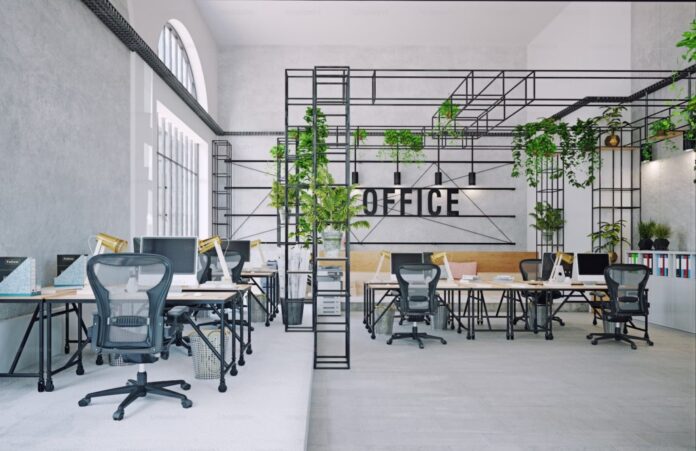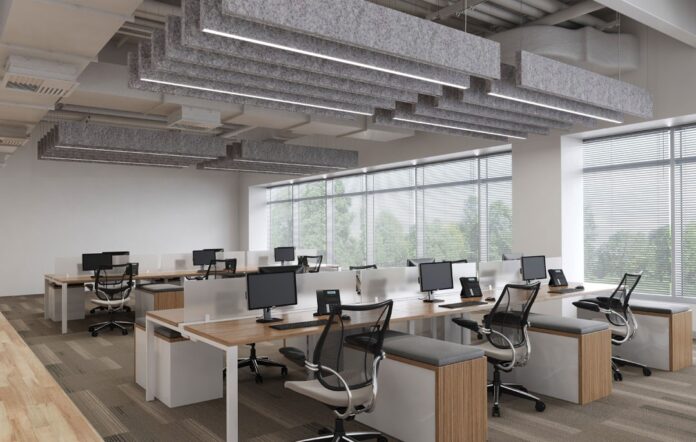The office is more than just a place where tasks get done. It’s the environment where people spend most of their waking hours during the week, and its quality directly impacts how energized, motivated, and focused everyone feels.
A healthier office environment doesn’t only reduce absenteeism and stress, it actively boosts creativity and collaboration.
If you’ve ever noticed how a poorly lit, cramped workspace drains energy while a clean and thoughtfully designed office lifts spirits, then you already know how much the atmosphere shapes performance.
Creating this kind of workplace doesn’t happen by accident. It’s the result of intentional decisions – ranging from the layout of furniture to the subtle habits of daily interaction – that turn the office into a supportive ecosystem for well-being.
Why Office Health Matters More Than You Think

There’s a growing recognition among companies that the office environment isn’t just about ergonomics or efficiency. It’s about sustaining people. Teams perform best when they feel cared for, both physically and mentally.
A healthier office can:
- Reduce chronic stress and fatigue, which often come from poor air quality, noise, or uncomfortable seating.
- Strengthen team culture by showing that well-being is taken seriously.
- Enhance productivity because healthier employees naturally focus better and take fewer sick days.
- Support retention since workers are less likely to leave an environment where they feel valued.
These benefits combine into something powerful: a healthier office doesn’t just improve the day-to-day, it future-proofs the company.
Designing with Comfort in Mind
Comfort goes beyond soft chairs or stylish desks. It’s about creating a space where employees feel physically supported and mentally at ease.
The desk setup is often the heart of this. If your team spends most of their time working at computers, investing in ergonomic tools pays off in fewer aches, better posture, and improved focus.
One overlooked upgrade is the 3d mouse pad with wrist support. It’s a small detail, yet it significantly reduces strain during long hours of typing or designing.
Pair this with adjustable chairs and desks, and suddenly the daily grind feels less like a battle with your own body and more like an environment designed to help you thrive.
Beyond furniture, consider lighting. Natural light is best, but if that’s limited, opt for warm LED bulbs that mimic daylight instead of the harsh fluorescents that often cause fatigue.
Adding plants can also soften the room while improving air quality, turning sterile corners into refreshing micro-retreats.
The Role of Air, Light, and Acoustics

It’s easy to underestimate how much invisible factors shape well-being. Air quality, lighting, and sound control might not be glamorous, but they make or break a workspace.
- Air quality: Poor ventilation leads to headaches, drowsiness, and reduced concentration. Installing air purifiers or ensuring HVAC systems are maintained helps employees breathe easier.
- Lighting: Balanced lighting reduces eye strain. A mix of overhead and task lighting ensures no one is squinting or dealing with glares on screens.
- Acoustics: Open-plan offices can be noisy. Adding acoustic panels, rugs, or quiet zones gives people options for focused work.
These investments may not be flashy, but they create a background of calm that teams often don’t notice until it’s gone.
Encouraging Healthy Movement
A healthier office environment also nudges people away from the sedentary trap. Small cues can encourage movement throughout the day.
For instance, standing desks give employees the option to stretch without leaving their workspace.
Even subtle reminders, like placing printers or water coolers in central spots, get people walking and engaging casually with teammates.
You can also bring in structured activities:
- Quick mid-morning stretch sessions led by volunteers.
- Walking meetings for smaller groups when weather allows.
- Fitness partnerships with local gyms that encourage after-work wellness.
What matters isn’t building a corporate gym but creating a culture where moving is natural and normalized.
Nourishment That Fuels Focus

Offices run on caffeine, but energy isn’t just about coffee. The food environment influences how alert and stable employees feel throughout the day.
Offering healthier snacks—like fruit baskets, nuts, or granola bars – can replace the afternoon slump caused by vending machine sugar bombs.
It’s also worth thinking about hydration. Easy access to filtered water and stylish refill stations promotes a simple but crucial habit.
Even small details, such as mugs instead of disposable cups, signal a culture that values both health and sustainability.
Mental Health as a Design Priority
Physical comfort is essential, but a healthier office environment is incomplete without attention to mental well-being. Stress doesn’t vanish with better lighting alone. Leaders need to model openness about taking breaks, setting boundaries, and respecting time off.
You might introduce:
- Quiet rooms where employees can decompress without distractions.
- Access to counseling services or mental health hotlines.
- Company-wide initiatives like “no-meeting afternoons” to reduce cognitive overload.
When employees feel psychologically safe, they contribute ideas more freely and work with more trust.
The Social Layer: Building Connection in the Office

Offices are communities, not just collections of desks. A healthier environment fosters relationships, because support networks at work are a protective factor against stress.
Something as simple as a weekly shared lunch, team-building activities, or a comfortable lounge where people naturally gather can transform the workplace dynamic.
It’s not about forced fun, but about creating spaces where human interaction feels easy.
Even small rituals, like celebrating birthdays or recognizing team milestones, make employees feel like they’re part of something larger than themselves.
Technology That Reduces Stress
While technology can overwhelm us, it can also streamline tasks and lighten mental loads.
Cloud-based collaboration tools cut down on email clutter, while project management apps prevent bottlenecks.
Offices that invest in user-friendly tech show that they value efficiency without creating unnecessary friction.
At the workstation level, accessories like dual monitors, ergonomic keyboards, and noise-canceling headsets give employees more control over their focus.
When the tools work seamlessly, the team works seamlessly.
Conclusion
A healthier office environment isn’t about perfection; it’s about thoughtful progress. Each choice, whether adding ergonomic tools, improving air circulation, or setting aside space for quiet focus – builds toward a culture where employees feel energized, valued, and capable of their best work.
When the workplace becomes a place people enjoy rather than endure, teams don’t just survive the week, they thrive together.




